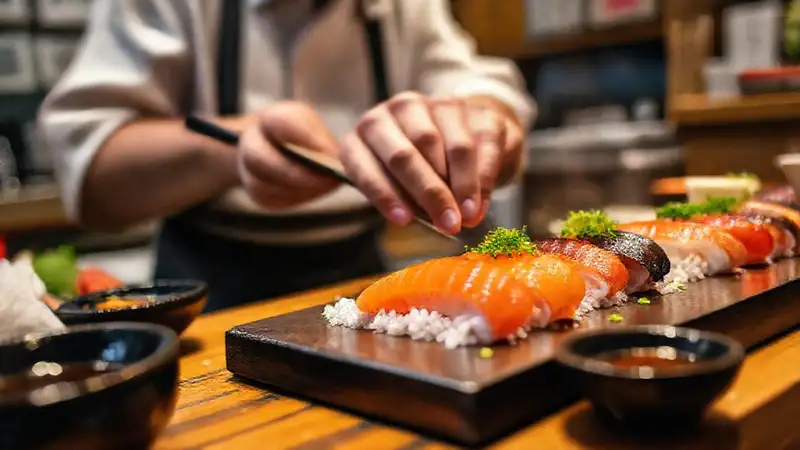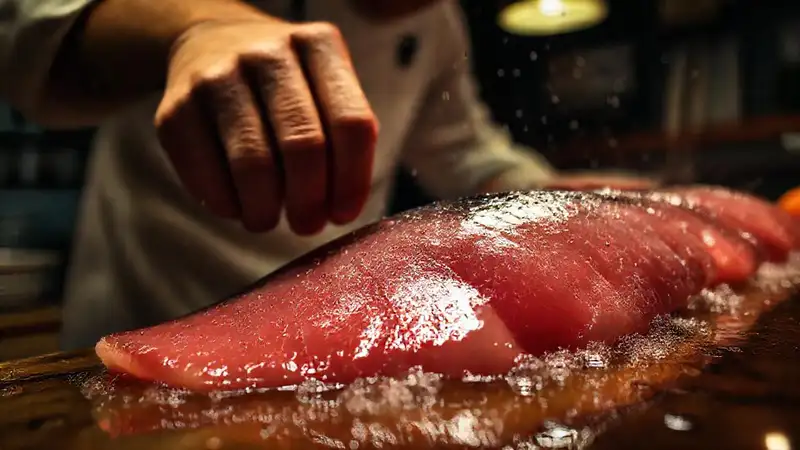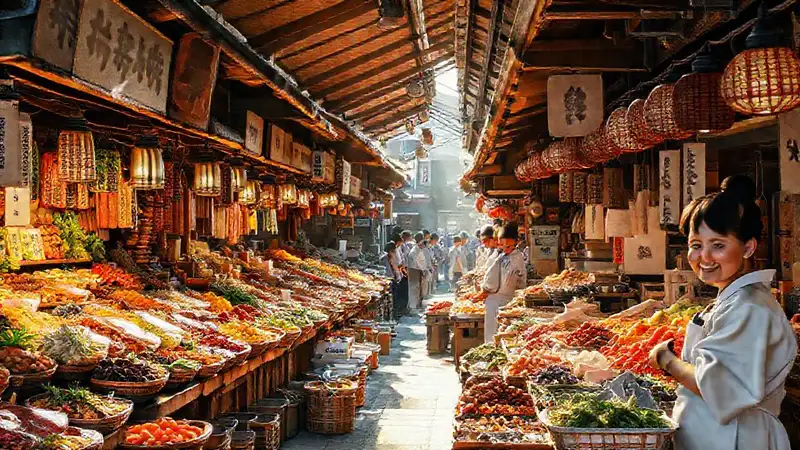Sushi, arguably Japan’s most globally recognized dish, isn’t a monolithic entity. It’s a vibrant tapestry woven with regional variations, each reflecting the unique history, ingredients, and culinary philosophies of its origin. While the image of meticulously crafted nigiri and maki rolls dominates international perceptions, a deeper dive reveals a complex landscape of sushi styles, profoundly influenced by geography and cultural traditions. This exploration will illuminate the distinct characteristics of sushi from Hokkaido, Kansai, and Tokyo, revealing how each region’s heritage contributes to the artistry and flavour of this beloved food.
This journey will go beyond simply listing different types of sushi. We’ll investigate the specific techniques, ingredient preferences, and philosophical approaches that define these regional approaches. Understanding these nuances provides a richer appreciation for sushi's versatility and demonstrates how deeply intertwined it is with the character of each Japanese region it calls home. Essentially, we'll unveil how each style tells a story about its place in Japan.
Hokkaido Sushi: The Frozen Frontier
Hokkaido’s sushi is distinctly shaped by its climate – a harsh, northern environment with abundant seafood and a shorter growing season. Traditionally, the focus was on utilizing the freshest catches possible, prioritizing quality over elaborate presentation. Early Hokkaido sushi, known as kamahazu, relied heavily on uni (sea urchin), ikura (salmon roe), and other ocean delicacies, often served simply with rice and a dab of wasabi. This was born from a desire to quickly consume the freshest ingredients before they spoiled.
Compared to other regions, Hokkaido sushi often features larger portions and a less restrained approach to ingredients. The emphasis is squarely on maximizing the intense flavour profiles of the seafood. You'll frequently find dishes featuring multiple types of seafood combined, showcasing the bounty of the sea. Furthermore, the use of local ingredients like matsutake mushrooms, prevalent in Hokkaido’s forests, is a hallmark of the region’s culinary style, occasionally adding an earthy counterpoint to the seafood.
A key distinguishing factor is the prevalence of narezushi techniques – a method of preserving fish in rice that contributes to a uniquely fermented flavour. While less common now, it represents a significant part of Hokkaido’s sushi history and continues to influence certain preparations. It’s a testament to the region’s resourceful history and its capacity to preserve food in a challenging environment.
Kansai Sushi: Umami and Tradition

Kansai, encompassing Osaka, Kyoto, and Kobe, boasts a sushi heritage deeply rooted in tradition. The region's historical importance as a center of commerce and culture has shaped its culinary values, prioritizing precision, elegance, and a profound respect for ingredients. Kansai sushi, often referred to as Kansai-style or Osaka-style sushi, is known for its balanced flavour profiles and meticulously crafted presentation.
A defining characteristic of Kansai sushi is the inclusion of akazu, a vinegared rice seasoned with rice vinegar, sugar, and salt – a crucial element that sets it apart from the shari (seasoned rice) used in other regions. This particular rice preparation imparts a subtly tangy flavour that complements the seafood beautifully. Furthermore, Kansai sushi commonly incorporates toppings like thinly sliced tuna (maguro) and shrimp (ebi) but rarely features the extravagant presentations of some other styles.
Osaka’s influence is particularly strong, fostering a culture of quick, satisfying meals. You’ll often find katsuo-zushi, featuring grilled skipjack tuna, a beloved local specialty. The region’s dedication to simple yet exquisite dishes – the core of kaiseki (multi-course haute cuisine) – informs the presentation and ingredient selection in Kansai sushi, reflecting a mindful approach to creating a cohesive and balanced experience.
Tokyo Sushi: Edomae Refinement
Tokyo sushi, particularly Edomae sushi, holds immense significance as the birthplace of modern sushi. Originating in the Edo period (1603-1868), Edomae sushi established a unique methodology centered around the use of lactic acid fermentation to enhance the flavour of the fish. This innovative technique, championed by pioneering sushi chefs, is still central to Edomae sushi today.
Edomae sushi distinguishes itself with its use of neta—the topping – often featuring aged or cured fish, creating a bold and intensely umami-rich flavour. The chefs in Tokyo meticulously prepare the fish through various processes, like rubbing it with sake and salt, or using a specific type of vinegar brine. This aging process not only transforms the flavour but also tenderizes the fish, ensuring a melt-in-your-mouth texture.
Furthermore, the chef's role in Edomae sushi extends beyond simply placing toppings on rice. They actively engage in the preparation of the fish, employing techniques passed down through generations. This hands-on approach and the emphasis on the chef’s artistry are integral to the distinctive character of Tokyo sushi and why it’s considered a true art form.
Conclusion
Ultimately, understanding the regional differences in Japanese sushi reveals a profound appreciation for diversity. Each style – from the icy flavours of Hokkaido to the umami-rich traditions of Kansai and the meticulously refined Edomae sushi of Tokyo – speaks to a specific history, culture, and culinary philosophy. There’s no single “correct” way to enjoy sushi; rather, exploring these regional variations allows for a richer and more nuanced engagement with this iconic dish.
The ongoing evolution of sushi highlights Japan's ability to preserve traditions while embracing innovation. Each region’s dedication to using fresh, high-quality ingredients and mastering specific techniques contributes to the enduring appeal of sushi. It’s a testament to the artistry and dedication of Japanese chefs, ensuring that sushi continues to evolve and delight palates across the globe, showcasing the true heart of Japanese cuisine.
 How does Hokkaido’s connection to agriculture help
How does Hokkaido’s connection to agriculture help How does Tokyo’s tradition ensure high standards
How does Tokyo’s tradition ensure high standards What are some traditional Oaxacan drinks to pair with tlayudas
What are some traditional Oaxacan drinks to pair with tlayudas How does Kansai sushi relate to local markets
How does Kansai sushi relate to local markets How does Hokkaido's promotion influence tourism
How does Hokkaido's promotion influence tourism Can you detail Tokyo's nigiri rice preparation
Can you detail Tokyo's nigiri rice preparation What makes Tokyo’s otoro sushi so prized, truly
What makes Tokyo’s otoro sushi so prized, truly
Deja una respuesta